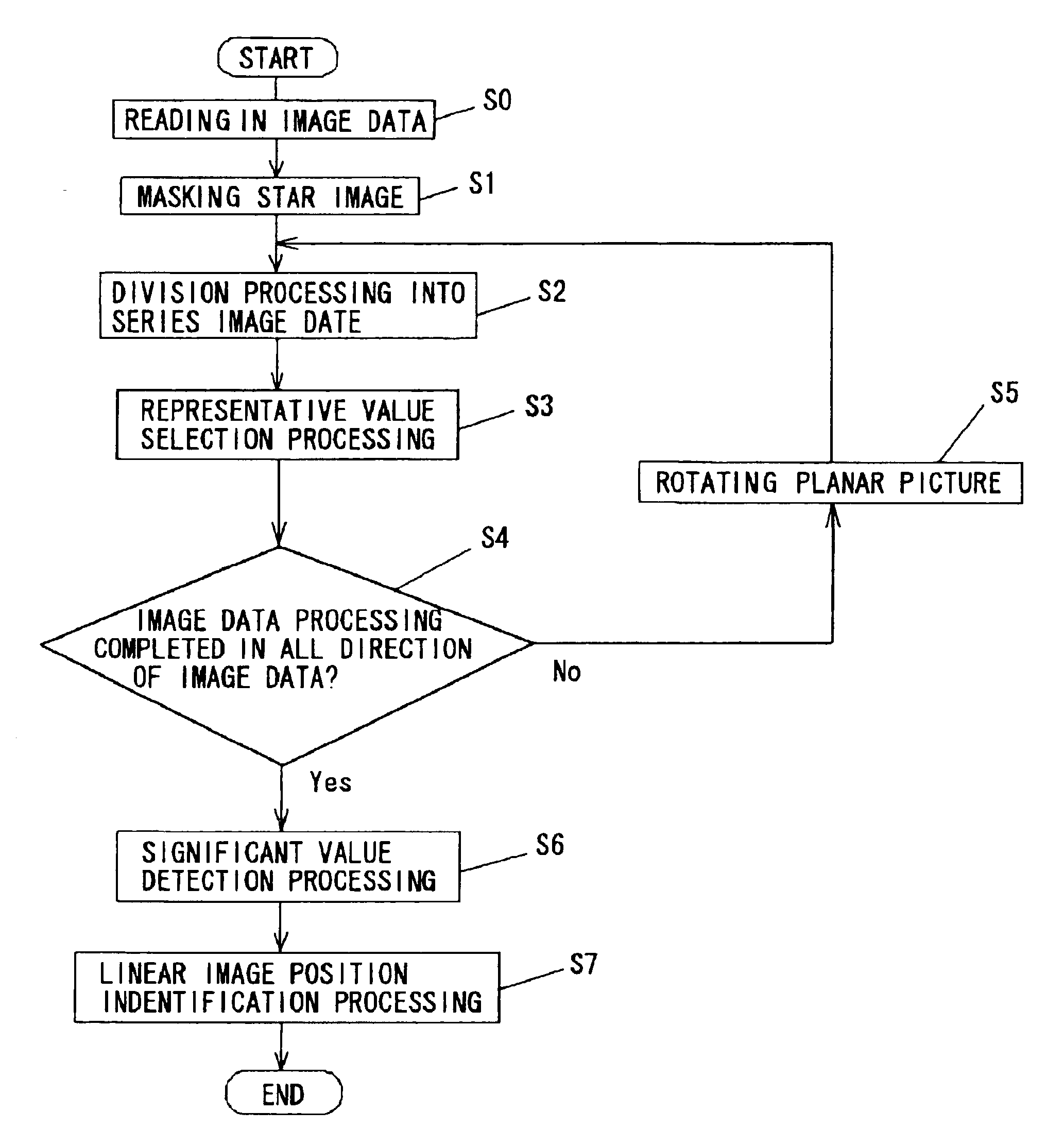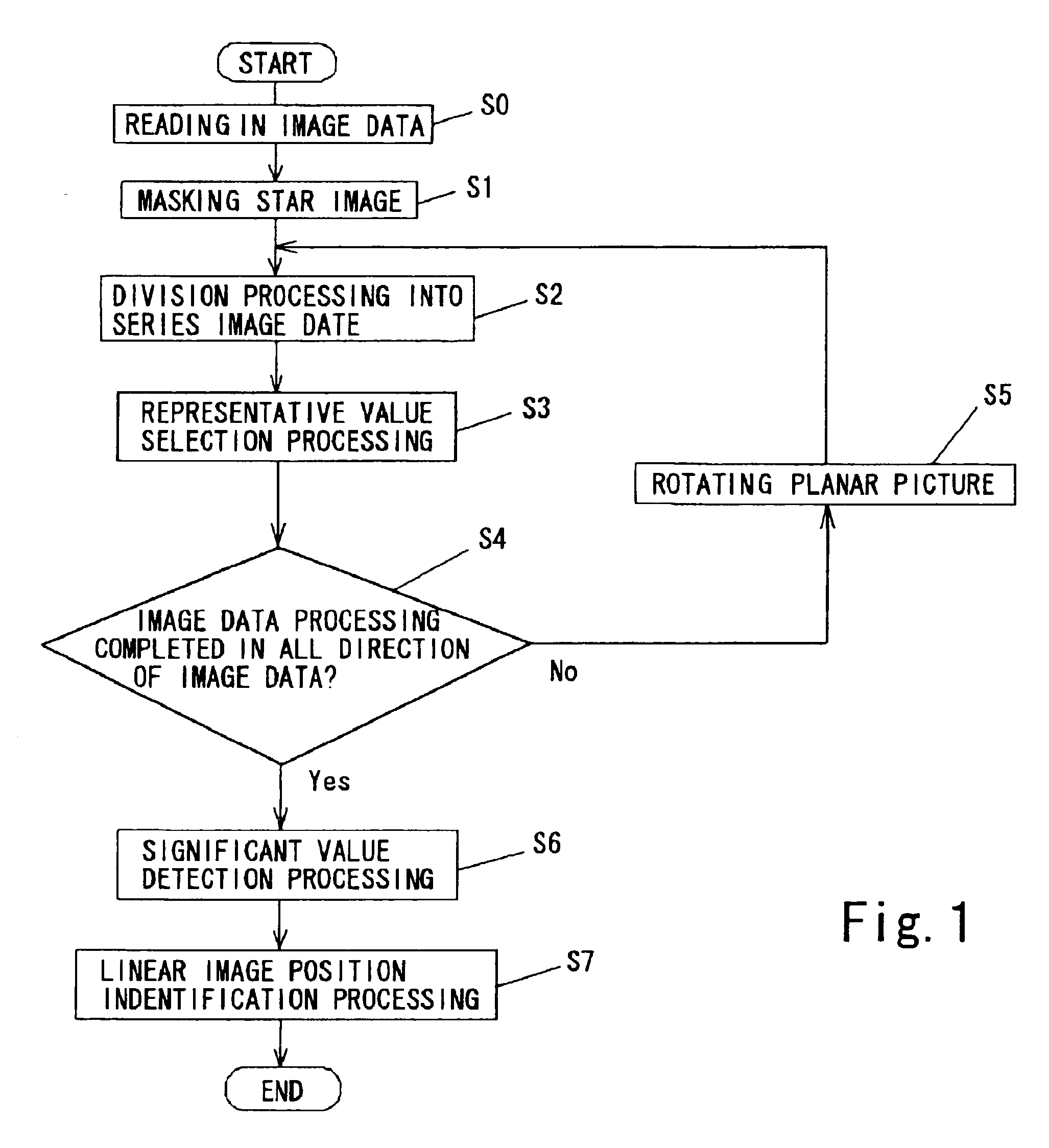Method for detecting linear image in planar picture
a linear image and planar image technology, applied in the field of linear image detection in planar pictures, can solve the problems of large amount of space debris (space garbage) of various sizes, high impact energy, and increased risk of space debris or astronauts performing a journey outside the craft, etc., to achieve short exposure time, short exposure time, and image satisfactorily
- Summary
- Abstract
- Description
- Claims
- Application Information
AI Technical Summary
Benefits of technology
Problems solved by technology
Method used
Image
Examples
Embodiment Construction
[0033] An embodiment of the linear image detecting method according to the present invention is described with reference to the drawings.
[0034] The planar picture shown in FIG. 2 is a CCD picture of the sky (in this case, the night sky) captured by a camera provided with a CCD imaging element installed in a telescope. In this planar picture, a large number of stars can be identified, but the linear images of low-altitude debris or meteors, if such exist, are difficult to identify because they are obscured by noise. In the linear image detecting method for planar pictures according to the present invention, as illustrated by the flowchart in FIG. 1, the image data of this planar picture is read into a calculating device, such as a PC (S0), and mask processing (S1) for removing the star images from the picture data is performed. The image data processing for achieving a median value picture, described hereinafter, involves statistical processing where a relatively small number of irr...
PUM
 Login to View More
Login to View More Abstract
Description
Claims
Application Information
 Login to View More
Login to View More - R&D
- Intellectual Property
- Life Sciences
- Materials
- Tech Scout
- Unparalleled Data Quality
- Higher Quality Content
- 60% Fewer Hallucinations
Browse by: Latest US Patents, China's latest patents, Technical Efficacy Thesaurus, Application Domain, Technology Topic, Popular Technical Reports.
© 2025 PatSnap. All rights reserved.Legal|Privacy policy|Modern Slavery Act Transparency Statement|Sitemap|About US| Contact US: help@patsnap.com



